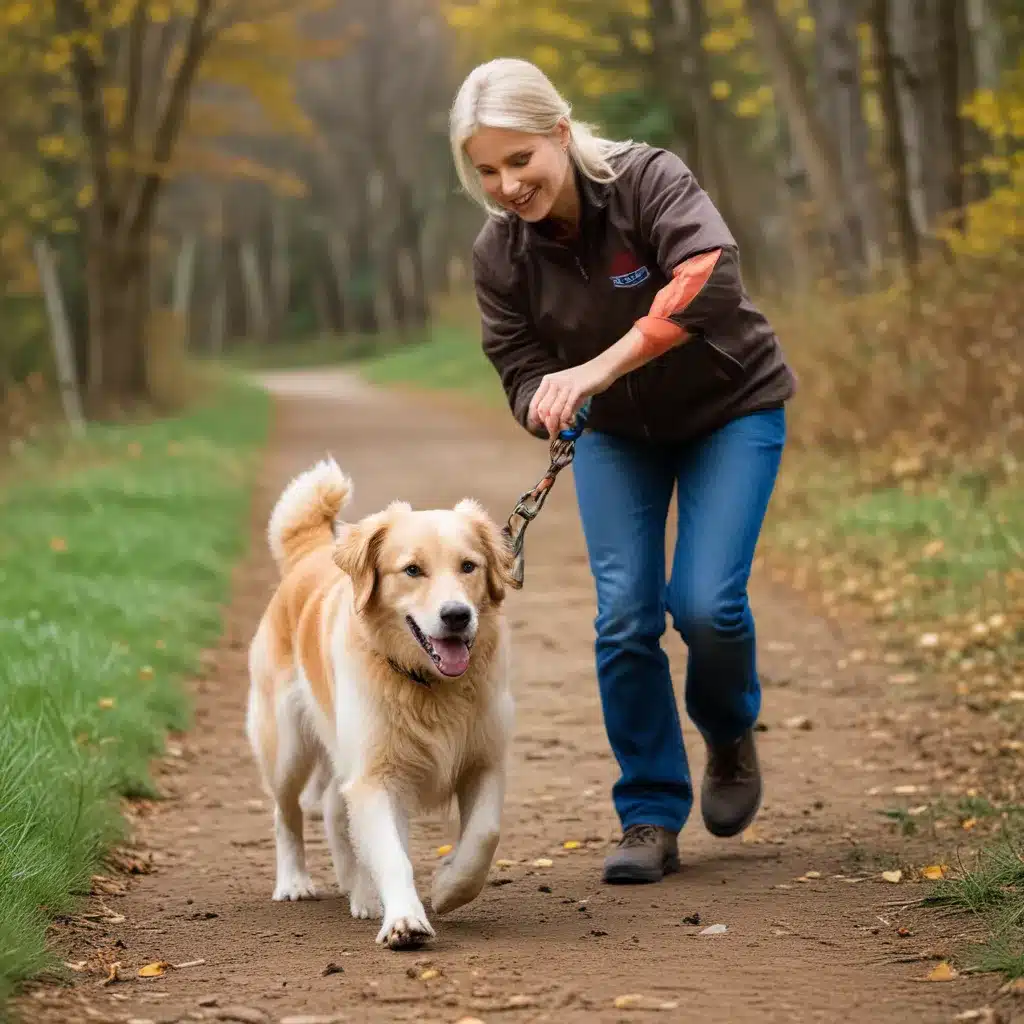
Teaching Your Dog to Come When Called: A Lifesaving Skill
As a dog parent, there’s nothing quite like the pure joy of watching your furry friend bound towards you, happily responding to your call. It’s a heartwarming sight that fills me with pride and a deep sense of connection. But let’s be real – getting to that point can be a real challenge, especially if you’re the proud parent of a canine with a stubborn streak, like me.
I’ll never forget the day I adopted my Great Pyrenees, Ned. I had high hopes of training him to be the perfect off-leash companion, but boy, was I in for a rude awakening. That dog has selective hearing like no other! I’d call and call, and he’d just keep on doing his own thing, blissfully ignoring me. It was enough to make me want to pull my hair out.
One day, I had a wake-up call that really drove home the importance of a reliable recall. Ned slipped through a gap in the fence and started sprinting towards a busy road. In a moment of sheer panic, I yelled out his emergency recall command, and to my amazement, he stopped in his tracks and came trotting back to me. That incident showed me just how crucial it is to have that lifesaving skill in your toolbox.
Ever since then, I’ve been on a mission to help other dog parents, especially those with stubborn, independent breeds like Great Pyrenees, master the art of the reliable recall. It’s a journey that’s had its fair share of ups and downs, but I’m here to share what I’ve learned along the way. So, let’s dive in and explore how you can teach your dog to come when called – a skill that could one day save their life.
Starting from the Basics
The foundation of a strong recall starts with building a positive association between the “come” cue and all sorts of delightful rewards. As the It’s Dog or Nothing blog points out, Great Pyrenees and other stubborn breeds can be particularly challenging when it comes to recall training. Their independent nature means they’re not always eager to drop what they’re doing and sprint back to you, no matter how tasty the treat might be.
That’s why it’s crucial to make the training process as fun and engaging as possible. I like to start in a low-distraction environment, like inside my home, and use high-value treats and toys to get Ned excited about coming to me. I’ll show him the reward, say “come,” and then praise and reward him lavishly when he reaches me. Gradually, I’ll increase the distance and start adding in more distractions, always making sure to keep the training session upbeat and rewarding.
One thing I’ve learned is to avoid the common mistake of using the “come” cue as a signal that the fun is over. Instead, I’ll recall Ned, give him his treat, and then release him to go back to whatever he was doing. This helps reinforce the idea that coming to me is a positive experience, not a prelude to the end of playtime.
The Emergency Recall: A Lifesaver
Now, as much as I’d love for Ned to have a 100% reliable recall in every situation, the reality is that even the most well-trained dogs can sometimes ignore their cues. That’s where the emergency recall comes in – a specialized command that’s reserved strictly for true emergencies.
I started training Ned’s emergency recall using a unique verbal cue, like “pronto” or “fast,” that he doesn’t hear in everyday situations. The idea is to make this command so powerful and meaningful that he’ll respond to it without hesitation, no matter what’s going on around him. As the experts at Cooper and Kids explain, it’s crucial to only use the emergency recall in true life-or-death scenarios, so it maintains its urgency and impact.
The first time I had to use Ned’s emergency recall, it was a heart-pounding moment. He’d slipped out of his collar and was headed straight for a busy road. Without missing a beat, I yelled “PRONTO!” and watched in amazement as he screeched to a halt and came sprinting back to me. I was so relieved, and it reinforced just how valuable this skill can be.
Consistency is Key
Of course, teaching a reliable recall isn’t a one-and-done kind of thing. It’s an ongoing process that requires patience, consistency, and a whole lot of positive reinforcement. As the experts at Outward Hound emphasize, it’s important to avoid “poisoning the cue” by overusing it or associating it with negative experiences.
That’s why I make a point to practice Ned’s recall in a variety of settings, from the safety of our backyard to the wide-open spaces of the local dog park. I also make sure to keep our training sessions upbeat and rewarding, never using the “come” cue as a signal that playtime is over.
It’s a lot of work, I won’t lie. But when I see Ned come tearing towards me, eyes shining with excitement, I know it’s all been worth it. That bond we share, the trust we’ve built – it’s priceless. And knowing that I have a reliable recall in my back pocket, one that could potentially save his life, well, that’s the ultimate reward.
So if you’re struggling to teach your canine companion this all-important skill, don’t get discouraged. Stick with it, get creative, and most importantly, have fun. Your dog’s safety and your peace of mind are worth the effort. And who knows, you just might end up with a four-legged friend who comes running every time you call, just like mine.

